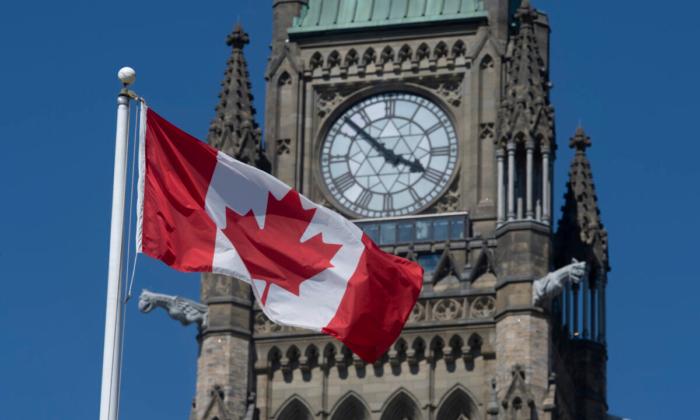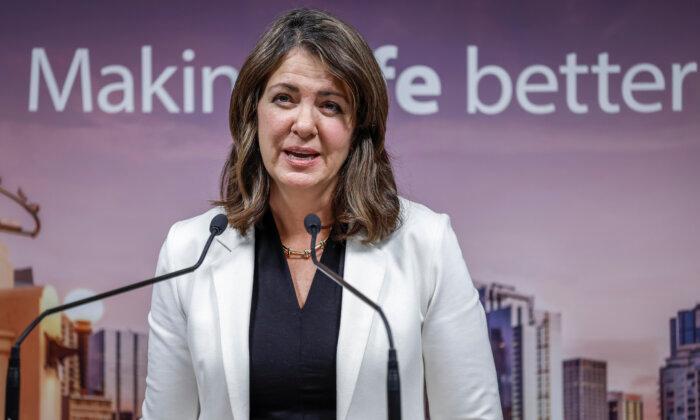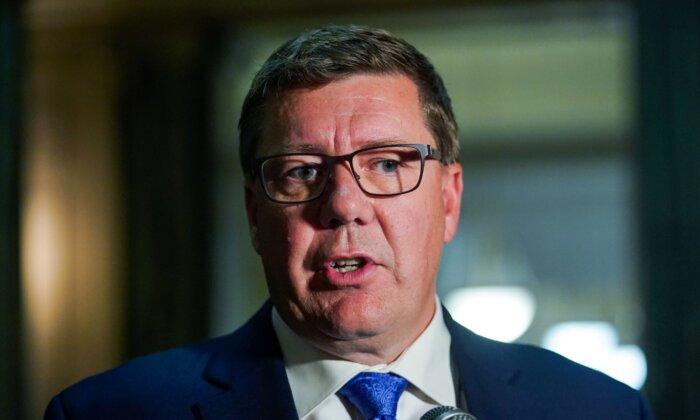A letter from the Department of Finance Canada says budget forecasts are a “modelling scenario” subject to change, and “should not be viewed as a prediction of the future.”
The statements were made in a letter to the Parliamentary Budget Office (PBO) and followed the federal cabinet raising its debt to GDP ratio, despite previous promises from Finance Minister Chrystia Freeland that there was “a line we will not cross.”
“The long term debt to GDP ratio projection presented in this budget is subject to a high degree of uncertainty and is sensitive to assumptions,” Assistant Deputy Finance Minister Julie Turcotte wrote the Budget Office, according to Blacklock’s Reporter on July 11. “As such it should not be viewed as a prediction of the future.”
Ms. Turcotte told the PBO that figures in the budget were a “modelling scenario” subject to change, and forecasts were “based on a set of reasonable economic and demographic assumptions assuming no future changes in policies.”
The letter was presented after the PBO requested documents that accounted for the cabinet’s debt figures. During an April 18 Senate finance hearing, Budget Officer Yves Giroux asked, “Has the government lost control of its spending?”
“I don’t know,” he said.
The 2023 budget put forward by cabinet raised the debt to GDP level past 45 percent, a large jump from 2019 when it sat at 30 percent, and despite promises made by Ms. Freeland on April 7, 2022, that cabinet would cut its debt to GDP ratio.
At the time, Ms. Freeland said: “This is our fiscal anchor, a line we will not cross. That will ensure our finances remain sustainable for so long as it remains unbreached.”
“We will review and reduce government spending because that is the responsible thing to do,” she said then. “On this point let me be very clear. We are absolutely determined that our debt to GDP ratio must continue to decline. Our pandemic deficits are and must continue to be reduced.”
The federal Parliament has not put forward a balanced budget since 2007.
Interest Charges
Interest charges on the national debt will cost $43.9 billion this year, the budget states, representing a $19.5 billion gain from the pre-pandemic rate of $24.4 billion, an 80 percent increase in financing charges.
In a report released on April 13, the PBO also criticized the “lack of transparency” provided in Budget 2023 concerning $798 million in net new, previously unannounced measures over fiscal years 2022–23 to 2027–28.
“This lack of transparency presents challenges for parliamentarians and the public in scrutinizing the government’s spending plans,” said the report, “Budget 2023: Issues for Parliamentarians.”
PBO Mr. Giroux said in the report, “In absolute terms, this represents over $12 billion in either revenue or spending decisions for which there are no specific details.”
He said it also impacts reconciling previous allocated budget amounts.
In 2020, then-Prosperity Minister Mona Fortier told the Commons finance committee that the debt to GDP ratio was a “guiding principle” of the treasury.
“The first one is to reduce the government’s debt as a function of our economy in the long term,” said Ms. Fortier.
Budget 2023 projected that the ratio would rise from 42.4 percent in 2022–23 to 43.5 percent and then 43.2 percent respectively for the next two years, before starting to fall below the 2022–23 level, and that it would decline to 39.9 percent in 2027–28.
In Mr. Giroux’s testimony at the Senate national finance committee in 2020, he said cabinet must control spending by setting targets.
“We have to have targets,” he testified. “The absence of a fiscal anchor can be equated with uncertainty,” he said, adding that “there is no clear path forward for the government’s finances. That’s a big question mark.”
Mr. Giroux suggested that if the government implemented targets, it would “provide a sense of direction, a sense of cohesion” that would let taxpayers anticipate future federal policies.
“Regardless of whether it be a balanced budget come hell or high water, as we had in the late 1990s, or a declining debt-to-GDP ratio, or a certain level of growth in expenditures, but something that can anchor expectations,” he said.





